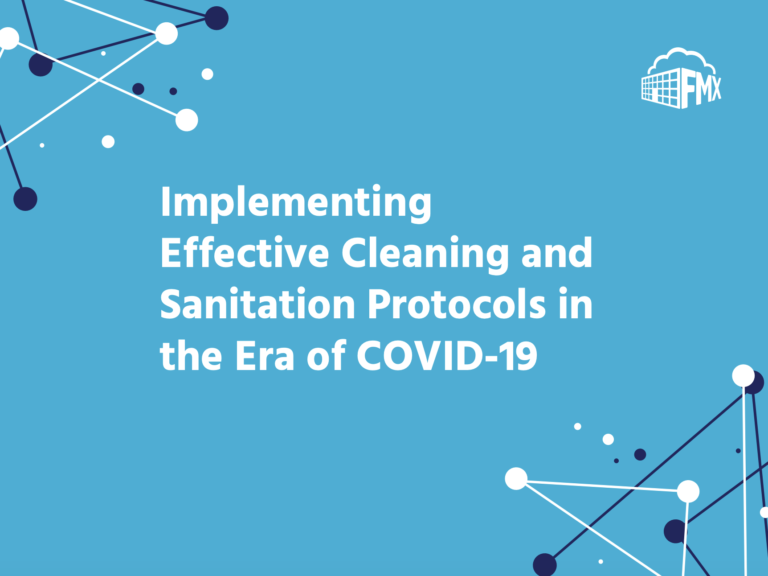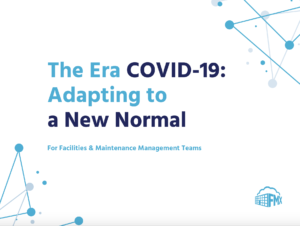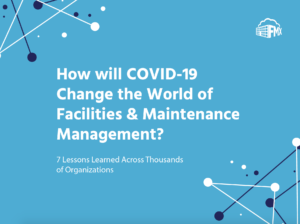Cleaning protocols are suddenly even more important
Before COVID-19, we all took cleanliness for granted. Consider the last time you thought about how clean a surface was, or if the facilities you work in have clean door handles, tables, or counters. Prior to the COVID-19 pandemic, these were things we didn’t think much about, or at least too often. We’ve entered a new era where cleanliness has become paramount.
So how can facility and maintenance leaders apply these extensive protocols into their organizations and be sure the work is getting done correctly?
The answer lies in managing a set of preventive maintenance best practices surrounding cleaning and sanitation to a degree in which we’ve never seen before.
Before the pandemic, many organizations cleaned when cleaning needed to be done. It was often reactive in nature, versus following a consistent schedule for everyone to adhere to. Now, cleaning is becoming preventive in nature. Ensuring it’s done right the first time is extremely important, because at least for now, there are no second chances.
Establishing a new mindset around preventive maintenance for cleaning and sanitation protocols is the first step toward safe and clean facilities. There are 5 key activities that help define how to tackle this new mindset.
- Protocols – Protocols are the proactive processes and procedures you put into place that define what gets done. It sets a baseline for the rest of your preventive maintenance processes, and without them, everything else is reactive.
- Inspections – Inspections help you understand what needs to be done and the priority level.
- Detection – Detecting issues and needs can come from anyone, including facility management teams, employees, or the general public. Everyone can be your “eyes and ears” to ensure safety and cleanliness is put first.
- Correction – Correction includes the detailed measures you outline to resolve the problem or complete the work order.
- Prevention – Prevention includes the steps you take to ensure the issue or problem doesn’t happen again, happens much less frequently, or can be otherwise prevented from causing significant impact.
Protocols
The Centers for Disease Control (CDC) is the authority on cleaning and sanitation for schools, workplaces, and community locations, and has outlined detailed guidance for every type of organization. Facility and maintenance leaders are rapidly applying these protocols to their organizations and are working to educate and empower their teams.
Preventive maintenance surrounding cleaning and sanitation can either be time-based or usage-based. If we consider restrooms, we might have cleaned them once a day around 8:00 pm and hoped they would stay clean for 24 hours. This is an example of time-based cleaning and sanitation. Another organization might do the same based on occupancy. So if there are hundreds of employees in the building, they may set up their schedule to clean every 2 hours from 7:00 am through 7:00 pm, acknowledging that usage is much higher. Over weekends, when there are typically a couple dozen employees in their buildings, they revert to a simple once-a-day schedule. The key takeaway is that cleaning and sanitation must happen on a schedule that aligns with how your organization operates, the number of people involved, and the breadth of what needs to be cleaned and sanitized.
Ways that organizations are responding to the COVID-19 pandemic include, but are not limited to:
- Establishing handwashing stations across their organizations that outline how to wash your hands according to the CDC.
- Frequently cleaning “high touch surfaces” like countertops, door handles and knobs, and kiosks.
- Using electrostatic sprayers to clean 5 times the surface areas in a fraction of the time manual methods often take.
- Installing touchless fixtures in restrooms so occupants don’t have to touch handles.
- Moving back to paper towels from air drying machines, which prevent airborne particles from distributing more freely.
- Providing toilet seat covers to offer an additional level of protection to occupants.
- Upgrading cleaning products to ensure they are approved for use to effectively kill the COVID-19 virus.
- Expanding the cleaning team to include select, or even all employees, contractors, and/or vendors. If everyone helps out, greater cleaning measures can be tackled.
- Providing masks, gloves, and other protective equipment to employees, contractors, vendors, and even the general public.
Inspections
Inspections help us understand what needs to be done and the priority levels. A combination of routine and “ad hoc” equipment inspections help ensure that facilities and equipment are clean and sanitized to the protocols you set. It only takes one person who is infected to create a chain of havoc around the organization.
Another key aspect of inspections is testing employees. During these unprecedented times, facility and maintenance leaders may be tasked with taking on this new level of responsibility. If an employee has the virus, the next measures may include closing certain areas of the facility off, moving employees, or implementing other protocols. Inspections allow us to get ahead of things, but also respond quickly and effectively.
Detection
Throughout the COVID-19 pandemic, we’ve all heard the phrase “we’re in this together.” This couldn’t be more true when it comes to detection. Even the best facility and maintenance teams cannot be everywhere at once, so it’s important that every employee, contractor, vendor, and even the general public play a role in ensuring the cleanliness and sanitation of your facilities.
Employees, contractors, vendors, and even the general public need new ways to report incidents, notify leaders of unclean conditions, and help be the “eyes and ears” across the organization to effectively respond to this new normal.
Correction
With protocols, inspections, and detection all in place, the next measure to address is correction. You need to ensure the right protocols are being followed, by the right resources, with the right training. Cleaning and sanitation work needs to be right the first time or there may be major consequences.
Facilities and maintenance leaders, more than any other time in history, will want, and need, to know what work is being done, when, and by whom. Everyone is watching and will want to hear of detailed reports about the new cleaning and sanitation standards and protocols being followed. Having clearly documented, and verifiable, reports regarding all completed tasks will make the difference in keeping everyone safe, comfortable, and productive again.
Prevention
“An ounce of prevention is worth a pound of cure.” We’ve all heard this old adage and it couldn’t be more true today.
A key way to ensure proper execution of cleaning and sanitation protocols is by using software to create preventive maintenance tasks. This ensures tasks are assigned to the right team members, who have the right training and supplies to do the work. Documenting the cleaning that must be done, reporting its execution, and sharing this information with leadership – and even the community – gives valuable reassurances at a time where it matters most.
Preventive maintenance is a journey, not a destination. Top journals like Cleaning & Maintenance Management Magazine offer detailed guidance and even produced a benchmarking report designed to help facilities and maintenance leaders know where they stand today and collectively support one another in these new endeavors. Further, ongoing guidance from the CDC provides guidance to help people, families, and organizations navigate these uncertain times.
With the right protocols in place, the right inspection and detection procedures, and a plan to correct issues and prevent the spread, organizations can work together to return to normal business operations.


